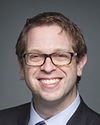Good afternoon. I'd like to thank the committee for inviting the Transportation Safety Board of Canada, the TSB, to discuss the topic of aircraft certification.
Today I am joined by my colleague, Natacha Van Themsche, director of investigations in the air branch. She brings a wealth of experience and has a background as an aerospace engineer with over 20 years in the Canadian Forces.
As there are some new members on this committee, I'd like to take a very brief moment to tell you who we are at the TSB and what we do.
The TSB was created in 1990 by the Canadian Transportation Accident Investigation and Safety Board Act. Our mandate and our sole purpose is to advance transportation safety in the air, marine, rail and pipeline modes of transportation that are under federal jurisdiction.
We do that by conducting independent investigations, identifying safety deficiencies, causes and contributing factors, making recommendations and publishing reports. Put more simply, when something goes wrong, we investigate to find out not just what happened but why, and then we make public what we've learned so that those best placed to take action—the regulator and industry—can do so.
The TSB is independent and operates at arm's length from other government departments and agencies. We report to Parliament through the President of the Queen's Privy Council for Canada. This lets us be impartial, free from any real or perceived external influence.
lt is also important to clarify what the TSB does not do. We are neither regulator nor court; we do not assign fault, nor do we determine civil or criminal liability. We do not conduct inspections or audits. Those functions are left to the regulators and other organizations.
As for today's topic, aircraft certification, that is something that, generally speaking, falls outside of TSB's mandate as defined in the CTAISB Act. We cannot certify aircraft or aviation equipment. That is part of Transport Canada's role. The TSB would only be involved in such a matter if, during the course of our investigations, aircraft certification were identified as a safety-significant issue. Although such a scenario is not common, it has happened on a number of occasions. Allow me to provide two high-profile examples to give you a sense of when and how this works.
On September 2, 1998, Swissair flight 111 departed New York on a scheduled flight to Geneva. About 53 minutes after departure, the flight crew smelled an abnormal odour in the cockpit. A fire was spreading above the ceiling in the front area of the aircraft. This led to a rapid succession of aircraft systems-related failures. The flight crew declared an emergency, but several minutes later the aircraft crashed southwest of Peggy's Cove, Nova Scotia, killing all 229 people on board.
TSB's complex and exhaustive investigation made many findings. Two of them were both causal to the accident and specifically mentioned the issue of certification. First, the TSB found that the aircraft certification standards for material flammability were inadequate, in that they allowed the use of insulating materials that could be ignited and could sustain and propagate a fire. Second, we found that there was no requirement to consider a fire-induced failure when completing the system safety analysis required for certification.
The second example is from March 12, 2009, when a Cougar Helicopters Sikorsky S-92A experienced a sudden loss of oil from the main gearbox. Shortly thereafter, the helicopter crashed into the Atlantic, approximately 35 nautical miles from St. John's, Newfoundland and Labrador, killing 17 of the 18 people on board.
TSB's subsequent investigation found issues with the certification process for the main gearbox, specifically that the certification standards did not require the helicopter to be able to continue flight for 30 minutes following a loss of lubricant from the oil filter bowl, as happened in this occurrence.
Since then, other TSB investigations have made findings on topics including the design and certification of emergency locator transmitters, or ELTs, and the design of emergency exits and whether they are adequate in cases of emergency egress.
Over the years, the TSB has issued safety communications related to certification, such as safety advisory letters and board recommendations, and the subjects of these have included such issues as the recording capacity of cockpit voice recorders or CVRs, the aforementioned flammability standards for insulation materials, aircraft performance in icing conditions and the installation of stall warning systems.
In each case, once a recommendation is issued, we assess the minister's response and conduct an annual reassessment of the updated responses received. We evaluate progress made toward reducing or eliminating the identified safety deficiency and then report publicly on what remains to be done.
Again, I need to stress that the TSB is not itself involved in the actual certification process. As I said earlier, we are not the regulator. Our sole objective is to advance transportation safety by identifying safety deficiencies and reporting publicly on what needs to be done to reduce or eliminate the risks.
Thank you, and in due course I will be pleased to take your questions.





